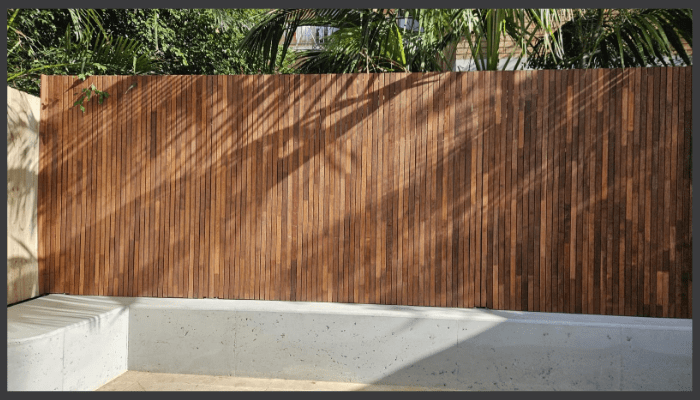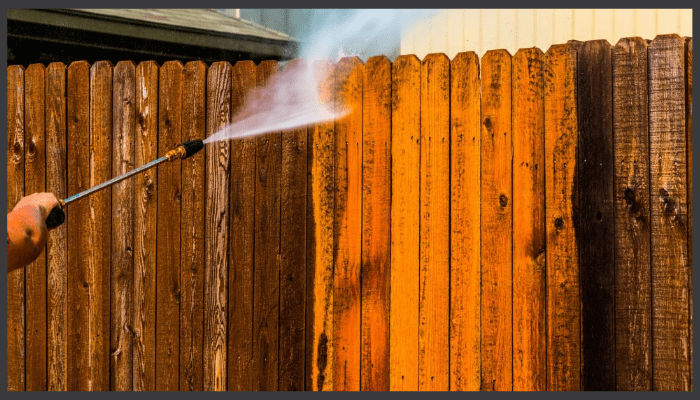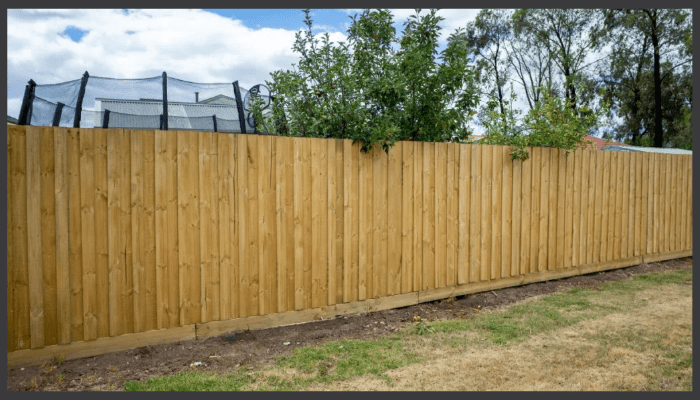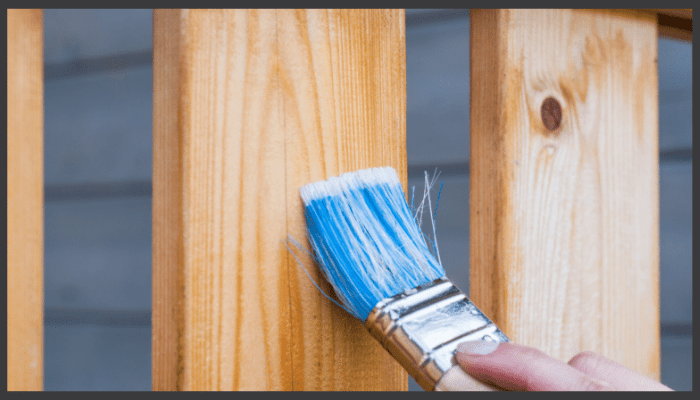How to Maintain and Extend the Life of Hardwood Fence Palings
Table of Contents:
- Why Choosing Hardwood Fence Palings is a Smart Way to Maintain and Extend Their Life in NSW
- Choosing the Right Hardwood Species
- Foundational Maintenance Protocol: Clean, Prepare, Protect
- Region Specific Maintenance Strategies in NSW
- Understanding the Deterioration Factors
- Selecting the Right Finish for Long Term Protection
- Preventing Structural Damage and Warping
- Pest and Vegetation Management
- Maintenance Calendar
- DIY vs Professional Maintenance
- Conclusion
- Frequently Asked Questions
To maintain and extend the life of hardwood fence palings, installing them is one of the best ways to add natural beauty, strength, and privacy to your property.
But even the toughest timber will cop a beating over time without proper maintenance. Regular maintenance keeps your fence's structural integrity solid.
It stops rot in its tracks and keeps everything looking fresh for decades.
This guide shows you exactly how to maintain and extend the life of hardwood fence palings whether you’ve chosen one of the best hardwood fence paling styles for Australian homes or a classic timber design built to last.
And how to do so with practical, Aussie specific maintenance steps. They'll protect your investments and keep your property looking brilliant long term.
Why Choosing Hardwood Fence Palings is a Smart Way to Maintain and Extend Their Life in NSW

Hardwood fence palings are strong and durable. They provide great strength, last a long time, and look good, too.
Many native Australian hardwoods rank high in durability — a key reason homeowners often choose them in the hardwood vs. softwood fence palings debate with options like Ironbark, Spotted Gum, Blackbutt, and Tallowwood leading the way.
They can handle any weather we face.
In NSW, fence timber typically gets treated to hazard levels (H3, H4, or H5) depending on moisture exposure and soil contact.
Meeting these standards means your fence fights off decay, insects, and the harsh weather we cop across coastal and inland regions especially when you regularly stain and maintain your hardwood fence palings to keep them sealed and protected.
Choosing the Right Hardwood Species
The timber you pick massively impacts maintenance needs and service life.
Ironbark
Rock solid and termite resistant with Class 1 durability. Needs quality sealers because it's so bloody dense.
Spotted Gum
Gorgeous grain and solid durability, but watch out for warping if moisture levels swing too quickly. Regular coating keeps the timber stable.
Blackbutt
Easy to maintain and loves finishes; just make sure the sapwood's treated for outdoor use.
Tallowwood
Tough as old boots and durable, though you'll need careful cleaning before coating thanks to natural oils.
Pick a species that suits your local climate and you'll get top performance with less frequent maintenance.
Foundational Maintenance Protocol: Clean, Prepare, Protect

Keeping your fence clean and well protected is where effective hardwood care starts.
Regular Inspections
Check your timber fence regularly, at least twice yearly, for signs of damage, movement, or insect infestations.
Hunt for loose boards, cracked rails, or colour changes that scream rot. Repair damage promptly while it's small. You'll dodge bigger structural integrity headaches later.
Cleaning and Removing Contaminants
Dirt, mould, and organic crud trap moisture that'll wreak havoc on timber. Hit your fence with mild detergent and water every few months to remove dirt and mildew.
Once a year, go hard with a diluted bleach mix (one part bleach to ten parts water) to knock out mould and algae.
If you pressure wash, keep that nozzle at least 30 centimetres back so you don't trash the wood fibres.
Surface Preparation
Before slapping on new finish, lightly sand weathered spots to strip greyed timber and help coating stick properly. For oily species, clean with solvent before applying finishes so everything bonds right.
Region Specific Maintenance Strategies in NSW

Different regions throw different curveballs at timber. Match your maintenance plan to local conditions for best results.
Coastal Areas: Salt, Humidity, and Corrosion
Coastal fences cop salt laden air, high humidity, and constant moisture exposure. To prevent decay:
-
Keep palings raised above soil line.
-
Make sure you've got proper drainage away from fence posts.
-
Check and replace corroded nails or fasteners regularly.
Inland Areas: Heat, Dry Winds, and UV Rays
Inland NSW gets dry conditions and scorching temperatures that cause cracking and warping. To reduce heat damage:
-
Leave small gaps between boards for ventilation.
-
Never coat timber during peak heat or you'll get rubbish adhesion.
Understanding the Deterioration Factors

Moisture and Fungal Rot
Too much moisture is the number one timber killer. Water trapped between boards or around posts breeds fungal rot. Signs include soft patches, discolouration, or crumbling fibres. Hit affected areas immediately and reseal to stop further deterioration.
UV Damage and Sun Damage
Australia's brutal UV rays absolutely hammer surface fibres, turning them grey and rough. Regular coats of UV blocking stains or oils slow this process and keep that smooth surface looking good.
Insects and Termites
Termites and borers can wreck your fence's structural integrity in no time. Trim vegetation back, keep a clear zone around posts, and avoid direct contact with soil wherever you can.
Selecting the Right Finish for Long Term Protection

Penetrating Oils
Oils like Tung or linseed based products soak right into the timber, fighting off moisture and making that grain pop. Clear oils need doing every year, but tinted versions with pigment give you UV resistance for up to three years.
Exterior Stains
Stains create a semi transparent barrier that protects against UV damage while keeping that natural texture. Water based stains are dead easy to slap on, dry quick, and won't harm the environment.
Paints
Paints Acrylic latex paints give you maximum UV protection and durability. Full coverage with bugger all maintenance needed, perfect when your fence cops a flogging from the elements.
Preventing Structural Damage and Warping
Regular inspections and fixing problems quick will extend your fence lifespan big time. Replace cracked or warped palings before recoating.
Seal end grains to prevent water getting in, and make sure posts have adequate drainage.
Airflow stops warping dead. Keep spacing between boards and trim vegetation away from the fence line.
Pest and Vegetation Management
Trim vegetation and shrubs regularly so they don't trap moisture against the fence. Never pile mulch or soil near posts because termites love that stuff.
In dodgy areas, get professional termite prevention or treatment for extra protection.
Maintenance Calendar
A proper schedule keeps your fence in top nick:
-
Every 6 months: Check and tighten nails or fasteners, hunt for loose boards, and check drainage.
-
Annually: Clean, sand, and blast off mould. Chuck on a fresh look coat of oil or stain if needed.
-
Every 2 to 3 years: Do a full reseal or repaint to keep UV and moisture protection sorted.
Regular maintenance is way more cost effective than replacing the whole fence, especially when you consider today’s rising palings cost across Australia.
DIY vs Professional Maintenance
Homeowners can handle routine cleaning and recoating easy enough. Yet, complex repairs or big refinishing jobs often need the pros.
Our expert team knows timber species, coating systems, and environmental factors well. This means you get better coverage, longer-lasting results, and overall improvement.
Conclusion
Maintaining and extending the life of hardwood fence palings comes down to staying on top of things.
Clean regularly, reseal when needed, and stop moisture and pest problems before they start. A solid maintenance plan does more than just safeguard your property.
It keeps your outdoor space looking properly maintained year round. Look after your hardwood fence properly and it'll last 25 to 40 years easy, giving you both good looks and rock solid protection.
Frequently Asked Questions
How Often Should I Reseal My Hardwood Fence?
Clear oils need doing yearly, tinted oils or stains every 2 to 3 years, and paints roughly every five years depending on exposure.
Can I Pressure Wash a Hardwood Fence?
Yeah, but use low pressure and keep that nozzle at least 30 centimetres back or you'll damage the fibres.
What's the Best Way to Prevent Termite Damage?
Use properly treated posts, keep clear soil gaps, and trim vegetation to cut down moisture and insect access.
When's the Best Time to Recoat a Fence in NSW?
Autumn or spring mate, when temps are decent and humidity's lower so your coating goes on even and dries properly.
How Do I Stop Fence Posts From Rotting?
Get H4 or H5 treated posts, sort out proper drainage, and avoid direct contact with soil or water pooling at the base.
What Maintenance Steps Prevent Warping?
Keep even spacing between palings, seal all cut ends, and never install wet timber that'll shrink all over the place.
How Long Should a Properly Maintained Hardwood Fence Last?
With the right timber treatment, coating, and maintenance schedule, you can maintain and extend the life of hardwood fence palings so they last 40 years or more, no worries.
